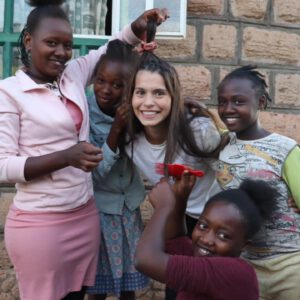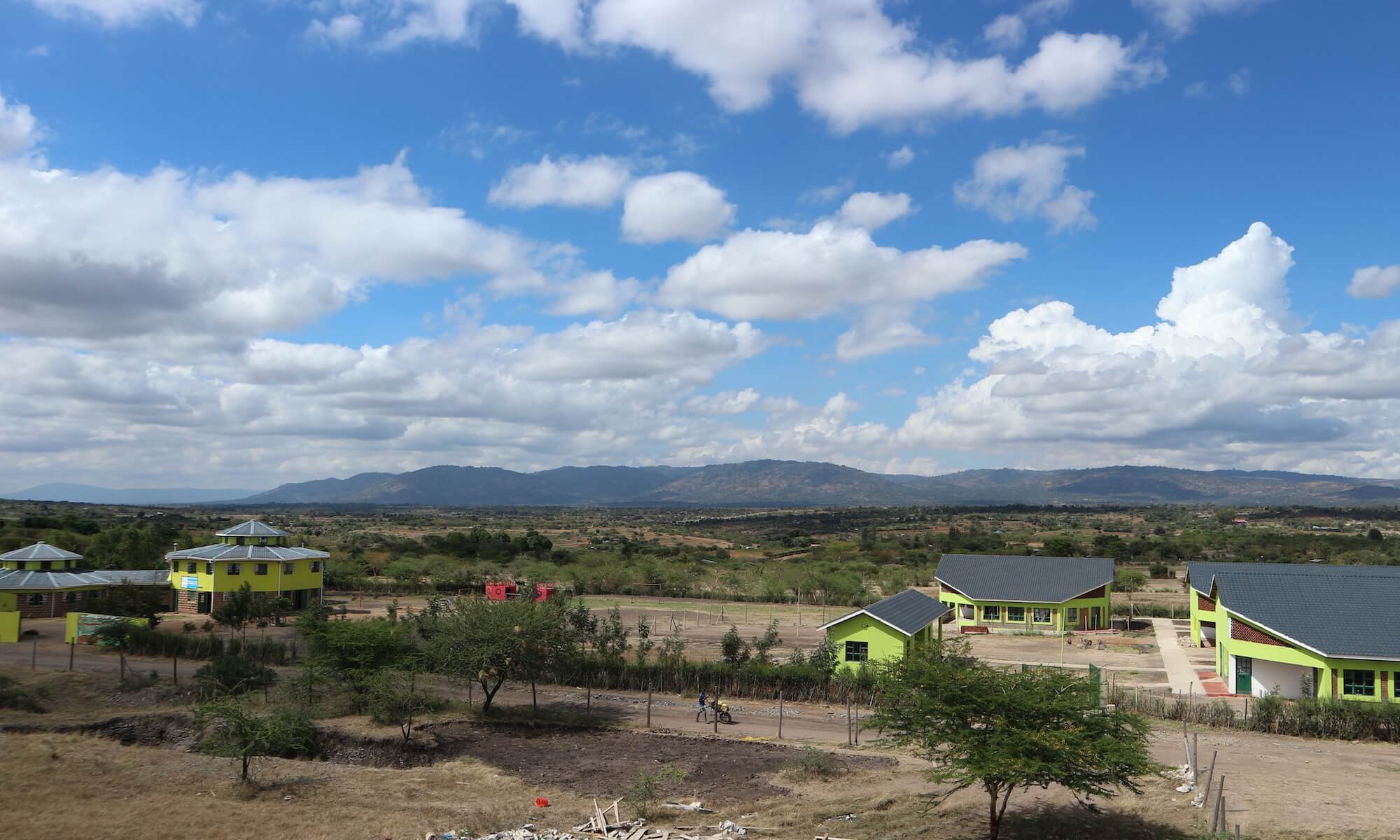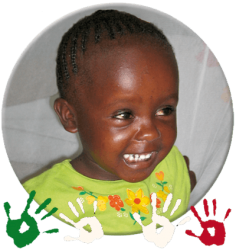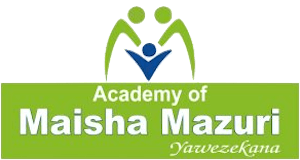Here I am, 5 weeks after my first report, and I’m faced with the crucial question: How do I put what I’ve experienced over the past 5 weeks into a report? The last few weeks have been turbulent, exciting, but also incredibly exhausting. It is an incredibly intense time that I am experiencing in Maisha Mazuri and I am infinitely grateful for it.
Easter in Maisha Mazuri
First, there was Easter. In Kenya, the church and faith play a very important role in people’s lives. However, Easter is not as important as it is for us and our traditions are largely unknown. Only the older children in Maisha Mazuri knew some of the activities from previous volunteers and were pestering me for days beforehand as to whether sweets would actually be hidden again at Easter. We started Easter on Good Friday, when we dyed 120 eggs red, orange, green and blue. The children loved it and took their job very seriously. The eggs were turned in color with the utmost care and I’m sure if I hadn’t stopped them they would still be coloring the eggs today.
Then on Saturday followed the well-known “Oascheim” in Bavaria. Two rakes are set up in such a way that a track is created. An egg is rolled onto the grass over this path and a small piece of money, in our case a small token, is placed on top of it. If the next egg hits one of the eggs lying in the grass and the token falls down, it belongs to the player who hit it. Since rakes were not available in Kenya, a creative solution was required. Fortunately, suitable replacement material could be found on the current construction site in Maisha Mazuri.
The rules were quickly explained and the fun could begin. But what a shock: Some of the eggs were still a bit raw! The children quickly boiled the eggs again, but the color came off again. But the kids didn’t let the fun spoil them. Besides, the eggs were eaten in no time anyway.
On Easter Sunday, after the morning church, the next highlight was on. A delicious chocolate surprise was hidden for each child in the outdoor area. Whether above the power box, in the tree or on the roof of the woodshed, the Easter Bunny found hiding places everywhere. The children knew no stopping! What an afternoon!
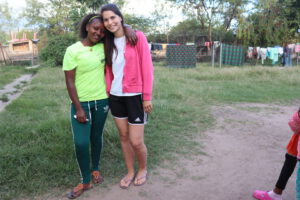
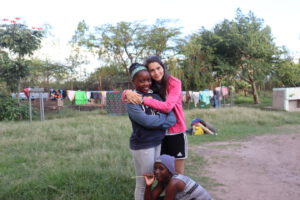
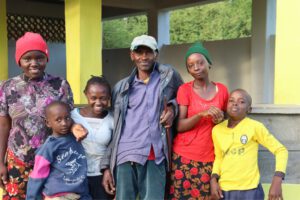
A new school year begins
As special as Easter was, everyday life caught up with us again: The long holidays were over and the new school year started: New classes, new schools and all the trappings covered both the children and the employees with a lot work on. The school system can hardly be compared to the German one and I find it difficult to get used to it. The children already learn the letters and numbers in kindergarten, learn to read simple words, count quantities and simple additions. Nevertheless, it is the case that many children, even in the higher grades, cannot read, write or do arithmetic. In the rigid Kenyan school system, a lot is learned by heart. The children learn to say rhythms, mnemonics and schemes up and down. Unfortunately, understanding is neglected here and children with learning difficulties in particular hardly have a chance with this system. There is no differentiation between the children. For me, who wants to be a teacher from the bottom of my heart, it was hard to watch.
So my main focus over the past few weeks has been helping the kids with their homework after school during the week and tutoring at the weekends.
Since at least four of the children share a room, I wanted to create a quiet place to learn. Together with the kids, we transformed the large anteroom in the volunteers area into a learning oasis. An empty bed and rug are now our reading area. The children love to hide under blankets with new books and read. Because the kindergarten has moved to the primary school (about 10 km away), I was able to get hold of an old whiteboard there. This allowed us to set up the room like a classroom. Since the schools in Kenya are only equipped with black chalkboards, learning with the whiteboard was particularly fun.
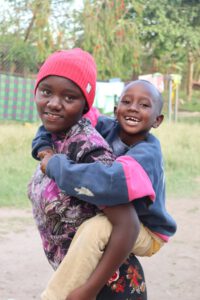
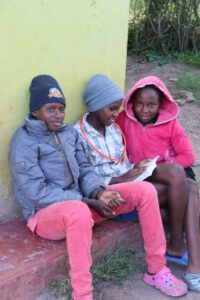
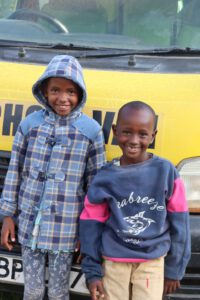
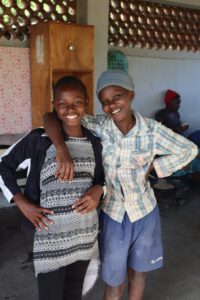
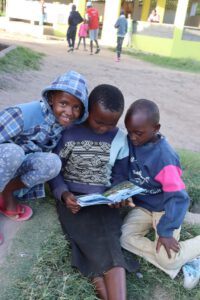
Everyday school life in Kenya is very strenuous. The children from the 3rd grade have to get up at 5.00 in the morning. They arrive at the school at around 6:00 am. There they begin, partly alone, partly with teachers, to repeat and practice the lesson content of the previous day. At around 8:00 a.m., the actual classes begin with subjects such as Kiswahili, English, social studies (geography, physics, biology), mathematics, art and music. The children have a total of 14 different subjects, all of which are taught in English except for Swahili.
By the way, Kiswahili and English are the two official national languages in Kenya. However, many children only speak their tribal language (one speaks of 52 ethnic groups with 61 language variants in Kenya!) when they come to school. So you have to learn the two languages Kiswahili and English from scratch.
I was particularly amazed at how little material the children had to get by with at school. Most of the students have exactly 1 pencil, some have 1 sharpener and 1 eraser. I can still remember my elementary school days well: a brand new satchel, school cone, a lunch box and drinking bottle, a pencil case full of crayons, a ruler and several pencils. And what a drama it would have been not to have the “sky blue” in the pencil case as well as the dark blue one! In what luxury we live!
At this point, thanks again to my many friends and acquaintances from Edling, who made so many great donations to my parents. My friend Antonia visited me in the meantime and brought everything with her. Together we have distributed everything to the places and children where it is most urgently needed. Asante Sana!
School finishes at around 5:30 p.m. The students come home, have to shower, eat and… then do their homework! These are long and exhausting days and around 9:00 p.m. not only do the children fall into bed, but I too, dead tired!
Your Vroni Berndl
PS: If you want to know more about the Hand in Hand for Kenya project or would like to see videos and pictures about the daily life of my volunteer time, have a look at Instagram handinhand4kenya.
